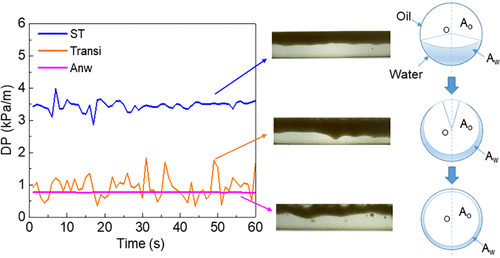当前位置:
X-MOL 学术
›
Ind. Eng. Chem. Res.
›
论文详情
Our official English website, www.x-mol.net, welcomes your feedback! (Note: you will need to create a separate account there.)
Investigation of the Flow Pattern Transition Behaviors of Viscous Oil–Water Flow in Horizontal Pipes
Industrial & Engineering Chemistry Research ( IF 4.2 ) Pub Date : 2020-11-17 , DOI: 10.1021/acs.iecr.0c03561 Haili Hu 1, 2 , Jiaqiang Jing 1, 3 , Sara Vahaji 4 , Jiatong Tan 1 , Jiyuan Tu 2
Industrial & Engineering Chemistry Research ( IF 4.2 ) Pub Date : 2020-11-17 , DOI: 10.1021/acs.iecr.0c03561 Haili Hu 1, 2 , Jiaqiang Jing 1, 3 , Sara Vahaji 4 , Jiatong Tan 1 , Jiyuan Tu 2
Affiliation

|
In the petroleum industry, oil–water flow appears in pipelines when connate water or injected water is present in the reservoir. As the characteristics of flow patterns differ, studying their transition behaviors helps to reduce the transportation risk caused by dramatic pressure drops. Additionally, pumping power can be significantly saved by transporting oil with water lubricating the pipe. In this paper, experiments were conducted in horizontal pipes to study viscous oil–water flow. Transparent acrylic pipes (7.5 m long and 26 mm internal diameter (ID)) were used, and water and viscous white oil (viscosity of 940 mPa·s) were adopted as the test fluids. The flow structures were recorded, and flow pattern maps were drawn. The characteristics of the transition flow were analyzed. The effects of oil viscosity, pipe ID, and interfacial tension on the transition behaviors were investigated by comparing the results obtained in this work with those from the literature. An empirical correlation for predicting the occurrence of annular flow was proposed based on the analyses of transition behaviors. The model results were found to be in good agreement with the experimental data.
中文翻译:

水平管中粘性油水流的流型转变行为研究
在石油工业中,当储层中存在原生水或注入水时,管道中就会出现油水流。由于流型的特征不同,研究它们的过渡行为有助于降低由急剧的压降引起的运输风险。另外,通过用水润滑管道来输送油,可以大大节省泵送功率。在本文中,在水平管道中进行了实验,以研究粘性油水流。使用透明的丙烯酸管(长7.5 m,内径(ID)26 mm),并使用水和粘性白油(粘度为940 mPa·s)作为测试流体。记录流动结构,并绘制流动模式图。分析了过渡流的特征。油粘度,管道内径,通过将这项工作获得的结果与文献中的结果进行比较,研究了过渡行为的界面张力和界面张力。在分析过渡行为的基础上,提出了一种预测环流发生的经验相关性。模型结果与实验数据吻合良好。
更新日期:2020-11-25
中文翻译:

水平管中粘性油水流的流型转变行为研究
在石油工业中,当储层中存在原生水或注入水时,管道中就会出现油水流。由于流型的特征不同,研究它们的过渡行为有助于降低由急剧的压降引起的运输风险。另外,通过用水润滑管道来输送油,可以大大节省泵送功率。在本文中,在水平管道中进行了实验,以研究粘性油水流。使用透明的丙烯酸管(长7.5 m,内径(ID)26 mm),并使用水和粘性白油(粘度为940 mPa·s)作为测试流体。记录流动结构,并绘制流动模式图。分析了过渡流的特征。油粘度,管道内径,通过将这项工作获得的结果与文献中的结果进行比较,研究了过渡行为的界面张力和界面张力。在分析过渡行为的基础上,提出了一种预测环流发生的经验相关性。模型结果与实验数据吻合良好。



























 京公网安备 11010802027423号
京公网安备 11010802027423号